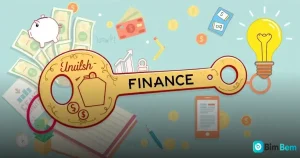Anúncio
Are you looking for effective smart saving tips to transform your finances?
Many individuals struggle to save money efficiently, often finding themselves in precarious financial situations.
Anúncio
However, with some simple strategies, you can learn to manage your finances better.
Understanding Smart Saving Tips
Understanding Smart Saving Tips is the first step towards achieving financial freedom.
Anúncio
These tips are designed to help you manage your money wisely and ensure that you have enough saved for emergencies or future goals.
By grasping the concept of smart saving, you can make informed financial decisions that positively impact your life.
What Are Smart Saving Tips?
Smart saving tips are practical strategies that encourage you to save money efficiently.
They focus on setting realistic savings goals, budgeting effectively, and finding areas where you can cut expenses without losing quality of life.
Why They Matter
Embracing these tips can lead to a more secure financial future.
They can help you build an emergency fund, save for a vacation, or invest in significant purchases like a home or car.
Understanding the value of saving is crucial in today’s economy, where unexpected costs can arise.
Key Components of Smart Saving Tips
Some essential components include:
- Budgeting: Keeping track of your income and expenses.
- Setting Savings Goals: Having a clear target makes saving easier.
- Cutting Unnecessary Expenses: Evaluating spending habits can reveal areas to save.
By knowing these elements, you can better implement smart saving tips in your daily life.
Putting Tips into Action
Understanding smart saving tips is only the beginning. It’s vital to put these strategies into action.
Start by creating a budget that reflects your income and expenses.
Identify at least one area where you can reduce spending each month and redirect those funds into savings.
Regularly reassess your approach to ensure that you’re on track to meet your financial goals.
Benefits of Smart Saving
Benefits of Smart Saving Tips are numerous and can significantly improve your financial health.
By embracing smart saving strategies, you set yourself up for a brighter financial future.
Building an Emergency Fund
One of the greatest benefits is the ability to establish an emergency fund.
This fund serves as a financial safety net during unexpected situations like medical emergencies or car repairs.
Having savings allows you to handle these situations without going into debt.
Achieving Financial Goals
Smart saving helps you work towards your financial goals, whether that’s buying a house, going on a dream holiday, or saving for your children’s education.
By setting clear savings targets, you create a roadmap to achieve these ambitions.
Reduced Financial Stress
As you accumulate savings, you may find that your stress levels drop.
Not worrying about finances allows for better focus on personal goals and increases overall well-being. Financial security brings peace of mind.
Teaching Financial Responsibility
Engaging in smart saving develops financial responsibility, teaching you to manage money wisely.
Understanding the importance of saving and budgeting cultivates a mindset that fosters better financial decisions.
Long-Term Wealth Accumulation
Consistently saving money can lead to long-term wealth accumulation.
Over time, your savings can grow through interest or investments, putting you in a stronger financial position.
This growth can create opportunities for further investments or enhanced lifestyles.
Improving Spending Habits
Smart saving encourages you to evaluate your spending habits.
By tracking where your money goes, you identify unnecessary expenses and learn to prioritise spending that aligns with your goals.
This shift improves overall financial habits.
Key Strategies for Smart Saving

Implementing key strategies for smart saving tips can significantly enhance your financial stability.
Here are some effective techniques to help you save money consistently.
Create a Budget
A well-structured budget is the foundation of smart saving.
Start by listing your income and expenses. Categorise your spending into needs and wants.
This clarity allows you to control your finances and identify areas to cut back.
Set Specific Savings Goals
Having clear, achievable savings goals motivates you to save.
Define what you’re saving for, whether it’s a holiday, a new car, or an emergency fund. Break larger goals into smaller, manageable steps for easier tracking.
Automate Your Savings
Consider automating your savings by setting up direct transfers from your checking account to your savings account.
This way, you save before spending, ensuring that a portion of your income goes directly to your savings.
Utilise Discounts and Coupons
Always look for discounts and utilise coupons when shopping. Whether online or in stores, these savings can add up quickly.
Take advantage of loyalty programs and cashback offers to further stretch your budget.
Cut Unnecessary Subscriptions
Review your subscriptions and memberships regularly. Cancel any that you don’t use or need.
This simple action can free up extra cash that can be redirected into savings.
Meal Planning
Meal planning can help reduce food expenses.
By planning weekly meals and making a shopping list, you can avoid impulse purchases and waste, ensuring that you stick to your budget.
Build an Emergency Fund
One of the smartest strategies is to build an emergency fund. Aim for at least three to six months’ worth of living expenses.
This fund provides financial security and keeps you from dipping into your savings for unexpected costs.
Mistakes to Avoid in Saving
Avoiding mistakes in saving is crucial for achieving your financial goals. Here are some common pitfalls to watch out for while saving money.
Not Having a Budget
One major mistake is not having a budget. Without a clear understanding of your income and expenses, you may find it difficult to save effectively.
Create a budget to track your financial flows and know where your money is going.
Setting Unrealistic Goals
Setting unrealistic savings goals can lead to frustration.
Ensure that your goals are achievable and specific, whether it’s saving a certain percentage of your income each month or saving for a specific purpose.
Ignoring Small Savings
Many people dismiss small savings as insignificant. However, these amounts can add up over time.
Every little bit counts, so be mindful of every opportunity to save, no matter how small it may seem.
Forgetting to Build an Emergency Fund
Failing to establish an emergency fund is a critical error.
An emergency fund prepares you for unexpected expenses and prevents you from derailing your saving progress.
Aim to save at least three to six months’ worth of expenses.
Living Beyond Your Means
Living beyond your means can quickly deplete your savings. It’s essential to live within your financial capacities.
Focus on needs versus wants, and manage your lifestyle to align with your income.
Neglecting to Review Progress
Another mistake is neglecting to review your savings progress regularly.
Set aside time each month to assess your financial situation, and adjust your budget and goals as necessary to stay on track.
Overlooking Automatic Savings
Some individuals overlook the benefits of automatic savings.
Automating your savings ensures that a portion of your income goes directly to your savings account, making it easier to achieve your goals without constant effort.
Tools for Effective Saving
Using tools for effective saving can greatly enhance your ability to manage and grow your savings. Here are some valuable resources to consider.
Budgeting Apps
Utilising budgeting apps such as Mint or YNAB (You Need A Budget) can help you track your spending and savings effortlessly.
These apps allow you to set budgets, categorise expenses, and monitor your progress, making it easier to stick to your savings goals.
High-Interest Savings Accounts
Consider opening a high-interest savings account.
These accounts typically offer higher interest rates than traditional savings accounts, allowing your money to grow faster.
This can make a significant difference over time.
Automated Savings Tools
Automated savings tools, like Qapital or Digit, help you save money without thinking about it.
These tools can automatically transfer a set amount from your checking account to your savings account.
They do this based on your spending habits, helping you save consistently.
Financial Planning Software
Financial planning software, such as Personal Capital, allows you to create a comprehensive financial plan.
This software helps you track investments, plan for retirement, and manages your overall financial health in one place.
Expense Trackers
Using expense trackers can help you understand your spending patterns better.
Apps like Expensify or PocketGuard allow you to log and analyse your expenditure, providing insights into areas where you can cut back and save more.
Cash Envelopes Method
The cash envelope method is a simple yet effective tool for managing your budget.
By allocating cash for specific categories (like groceries or entertainment) in envelopes, you can visually track your spending and avoid overspending in any category.
Goal Setting Apps
Goal setting apps, like SmartyPig, are designed to help you set and achieve savings goals.
You can create savings targets for different purposes and track your progress, encouraging you to reach your financial milestones.
How to Track Your Savings Goals

Tracking your savings goals is essential to achieving financial success. Here are some effective methods for monitoring your progress.
Set Clear Goals
Begin by clearly defining your savings goals. Specify how much money you want to save and the timeline for achieving that goal.
This helps create a sense of direction.
Use a Savings Tracking App
Utilising a savings tracking app, such as Goal Setter or Digit, allows you to monitor your savings in real time.
These apps visually display your progress and can send reminders to help keep you motivated.
Create a Savings Chart
A physical or digital savings chart can help you visualise your progress.
Mark your milestones, and as you save, fill in the chart. This tangible representation can be a great motivator.
Regular Check-Ins
Schedule regular check-ins to review your savings progress. You can do this monthly or quarterly.
Evaluate whether you’re on track to meet your goals and adjust your savings strategy if needed.
Celebrate Milestones
Recognising and celebrating milestones boosts your motivation.
When you reach a certain savings amount, reward yourself with a small treat. This creates positive reinforcement for saving.
Adjust Goals as Needed
Sometimes circumstances change, and that’s okay. If you find your goals are unrealistic or require adjusting, do not hesitate to modify them.
Flexibility allows you to stay committed to saving.
Stay Informed
Keep yourself informed about financial management and saving strategies.
Books, podcasts, and blogs can provide new ideas for tracking your savings efficiently.
Real-life Examples of Smart Savers
Real-life Examples of Smart Savers demonstrate how practical saving strategies can lead to financial success. Here are a few inspiring stories.
Emma’s Journey to Financial Freedom
Emma, a 29-year-old teacher, decided to take control of her finances after realising she was spending too much on dining out.
She created a strict budget and committed to cooking at home more often.
By doing this, she saved over R1,500 each month, which she redirected into her emergency fund. Within a year, she had saved over R18,000!
Michael’s Smart Investment
Michael, a software developer, began saving a portion of his salary in a high-interest savings account.
He also researched investment options to grow his wealth.
By the end of five years, his initial savings had doubled, thanks to compounded interest and smart investment choices that he made.
Michael encourages others to start saving early and take advantage of compound interest.
Sarah and the Challenge of Minimalism
Sarah, a 34-year-old marketer, decided to embrace minimalism as a lifestyle choice.
By decluttering her home and selling items she no longer needed, she made an extra R10,000 in six months.
She used this money to fund her travel goals, showing how simplifying life can also lead to financial gains.
The Smith Family Budgeting Together
The Smith family came together to create a family budget. They involved their children in understanding the value of money and saving.
Each member set individual savings goals. As a team, they managed to reduce their household expenses by 20%, which amounted to a savings of R5,000 each month.
Their teamwork not only helped them save but also taught valuable financial lessons to their children.
Tom’s Side Hustle Success
Tom, a recent graduate, started a side hustle as a freelance graphic designer while working a full-time job.
He allocated his freelance income directly to savings.
Over two years, this additional income significantly boosted his savings, allowing him to buy a car without taking a loan.
Tom emphasises the importance of using skills for additional income.
FAQ – Frequently Asked Questions about Smart Saving Tips
What are smart saving tips?
Smart saving tips are practical strategies that help you manage your finances effectively, ensuring you save money consistently.
How can I track my savings goals?
You can track your savings goals by using budgeting apps, creating savings charts, and conducting regular check-ins to monitor your progress.
What are the benefits of having a budget?
Having a budget helps you understand your income and expenses, allowing you to allocate funds efficiently and identify areas to cut costs.
Why should I build an emergency fund?
An emergency fund provides financial security against unexpected costs, preventing you from going into debt when unforeseen expenses arise.
How can I avoid common saving mistakes?
To avoid common saving mistakes, ensure you have a clear budget, set realistic goals, and regularly review your progress.
What tools can help me save effectively?
Tools such as budgeting apps, high-interest savings accounts, and automated savings tools can significantly enhance your ability to save.





